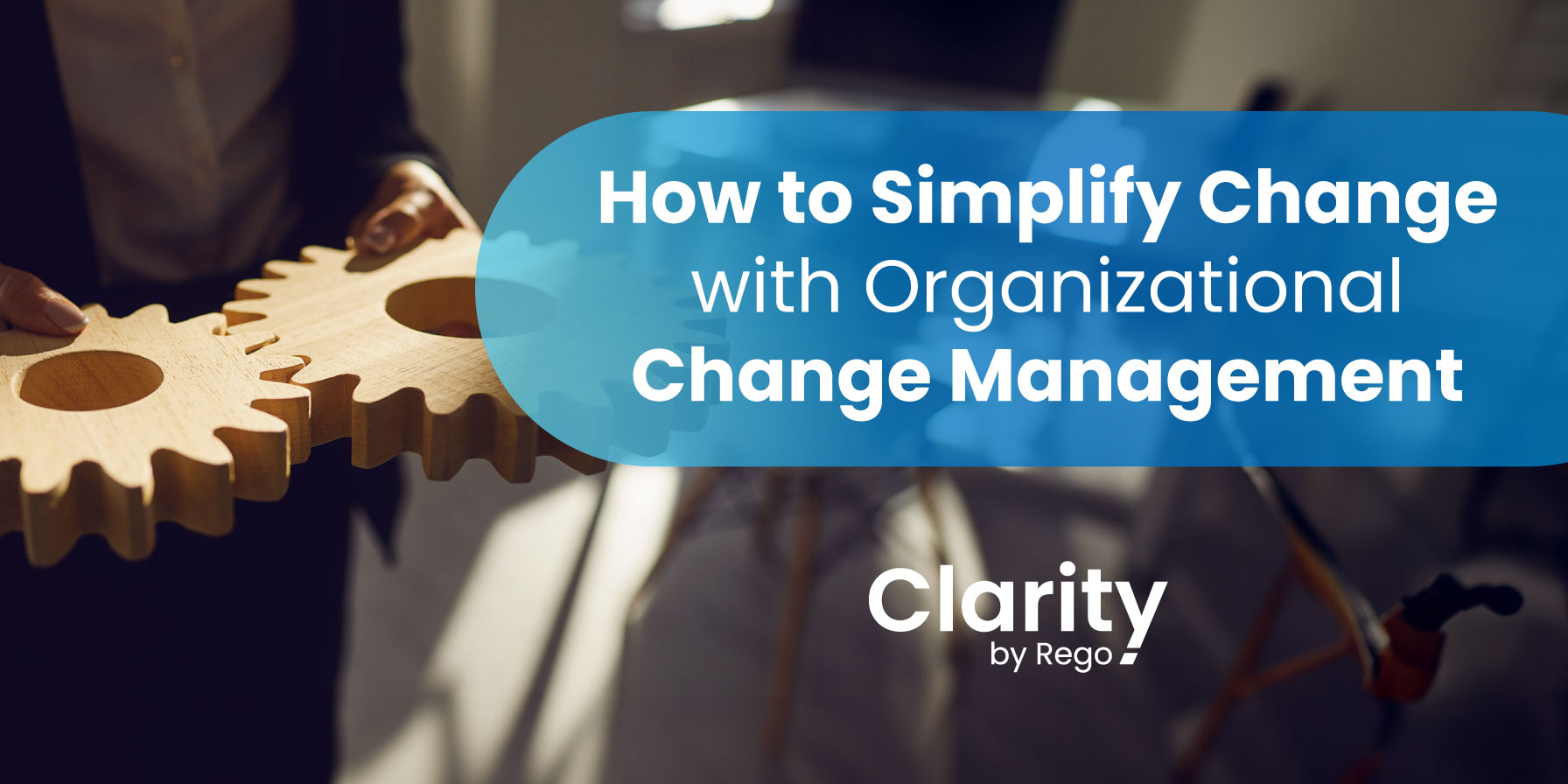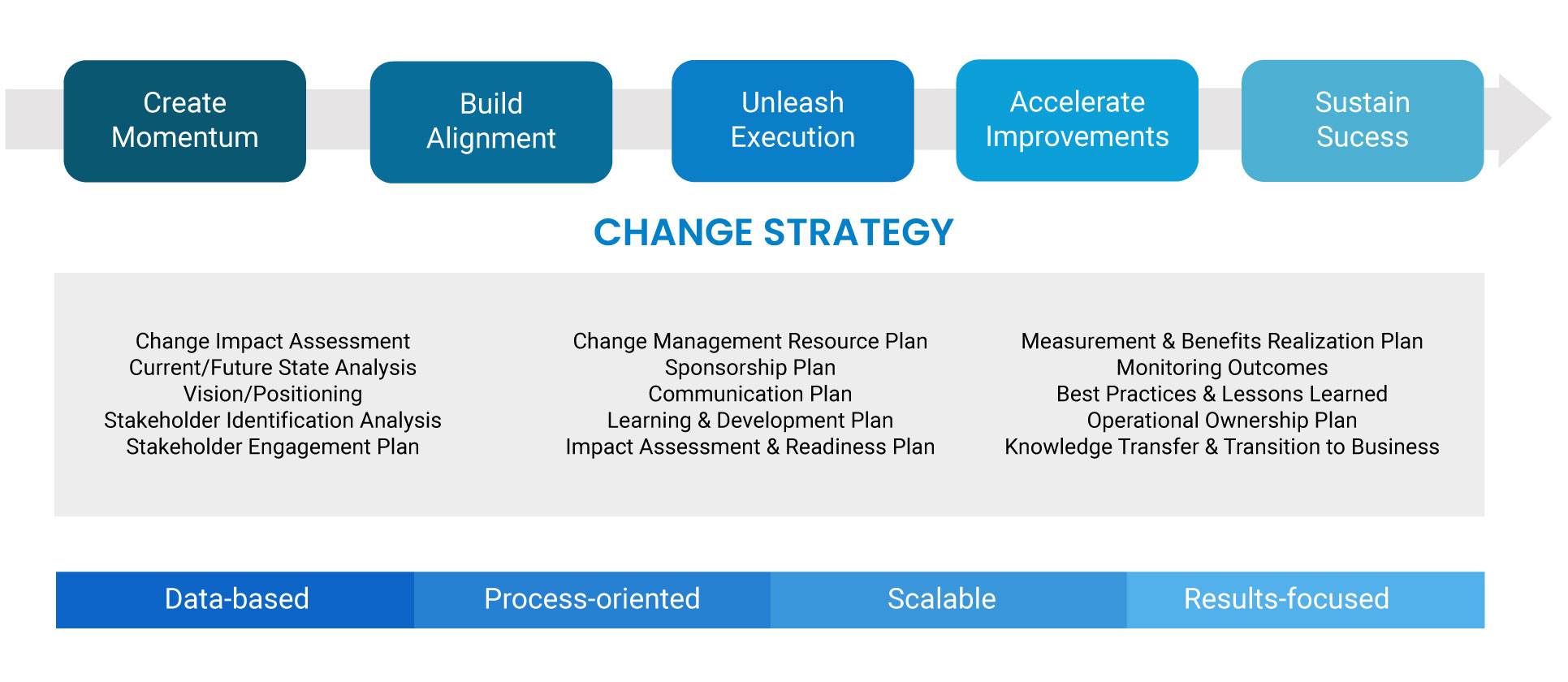by Clarity by Rego
Share

 It is not uncommon that when organizations try to implement significant changes across a department or organization that progress is difficult; and while the change is necessary, experiencing results seems a next-level impossible, if not viewed as a failure. In addition to the frustrations that accompany such lack luster results, there also can be adverse business effects when needed changes are not adopted. The good news is that there is a way to avoid this situation. It’s called Organizational Change Management.
It is not uncommon that when organizations try to implement significant changes across a department or organization that progress is difficult; and while the change is necessary, experiencing results seems a next-level impossible, if not viewed as a failure. In addition to the frustrations that accompany such lack luster results, there also can be adverse business effects when needed changes are not adopted. The good news is that there is a way to avoid this situation. It’s called Organizational Change Management.
Why Organizational Change Management
Organizational Change Management (OCM) is fundamentally about people. People need to know why a change is happening, what it means for them, and how they can be involved in the transition. It’s the difference between having people feel as though something is happening to them instead of something happening with them. Change Management works side by side with project management, and like Project Management has its own set of tools and lifecycle. While project management focuses mainly on the technical side of a project, OCM concentrates entirely on the people side of the project.
Change Management works side by side with project management, and like project management has its own set of tools and lifecycle. While project management mainly focuses on the technical side of a project, OCM concentrates entirely on the people side of the project.

It helps set a vision and strategy for implementing change with leadership support, identifies the impact of a transition on the organization, and addresses concerns people have. It also implements plans that allow people affected by a change to be involved throughout the process, including preparing them for the transition and what happens afterward.
Five Common Reasons People Resist Change
- Don’t understand why a change is needed
- Don’t like specific aspects of the change
- Change saturation (too many other changes occurring at the same time)
- Fear
- Lack of support from management or leadership
Frameworks Streamline Organization Change Management
When implementing a change in an organization, its good to use a framework to help guide you through the process. Don’t go it alone or reinvent the wheel. Popular frameworks include John Kotter’s 8-Step Process and the Prosci ADKAR Model, to name a few. No matter the kind of changes you are making, any of the available frameworks will provide value and guide you through the process.

Leverage Guiding Teams to Effect Organizational Change Management
It’s a common misconception that OCM is just about training. It’s also about communication and rallying leadership and others across the organization in support of the change. To ensure the change is accepted and adopted a guiding team can be your not-so-secret weapon. Here are some best practices:
1. Use all Levels in a Guiding Team
Guiding teams should be composed of individuals across all areas and levels of the business. The Sponsor is your ultimate guide — your executive champion. The Steering Committee is your executive team. Middle Management & End Users comprise your cross-functional team across the change impact zone. And at the field level, you have people working across major company locations or groups.
2. Adopt a Guiding Team Mission Statement
Projects come from your formal organization, but guiding teams work within your informal network–which makes them very effective. Have your guiding teams create a mission to translate your project or goal into the real-world. To meet their mission, guiding teams look at the different change adoption methods. When you’re pushing out change at the lowest level, values and incentives are different than when you’re bridging a gap at the executive level.
3. Bring the Guiding Team in Early
Bring in the guiding team at the Stakeholder Analysis phase. This is when you’re looking at who is getting impacted and how. Start there, with a variety of people from the impact zone. Once the guiding team understands how they’re impacted, they can embrace and adopt the change.
4. Pick Influencers and Integrators for a Guiding Team
People across the company will listen to their peers who are well liked, well connected, and have influence. Be selective in building the guiding team, but also ensure they feel like they can trust the change advocator – but also, make sure you have urgency, dedication, and commitment from the team. This means recognizing guiding teams are not a side project. For the best results, integrate them into your overall picture and rollout plan.
STAY IN THE LOOP
Get Notified of Updates.
Stay ahead of the curve by subscribing to our newsletter. Get the latest insights, strategies, and tools delivered straight to your inbox, and empower your business to achieve more.

